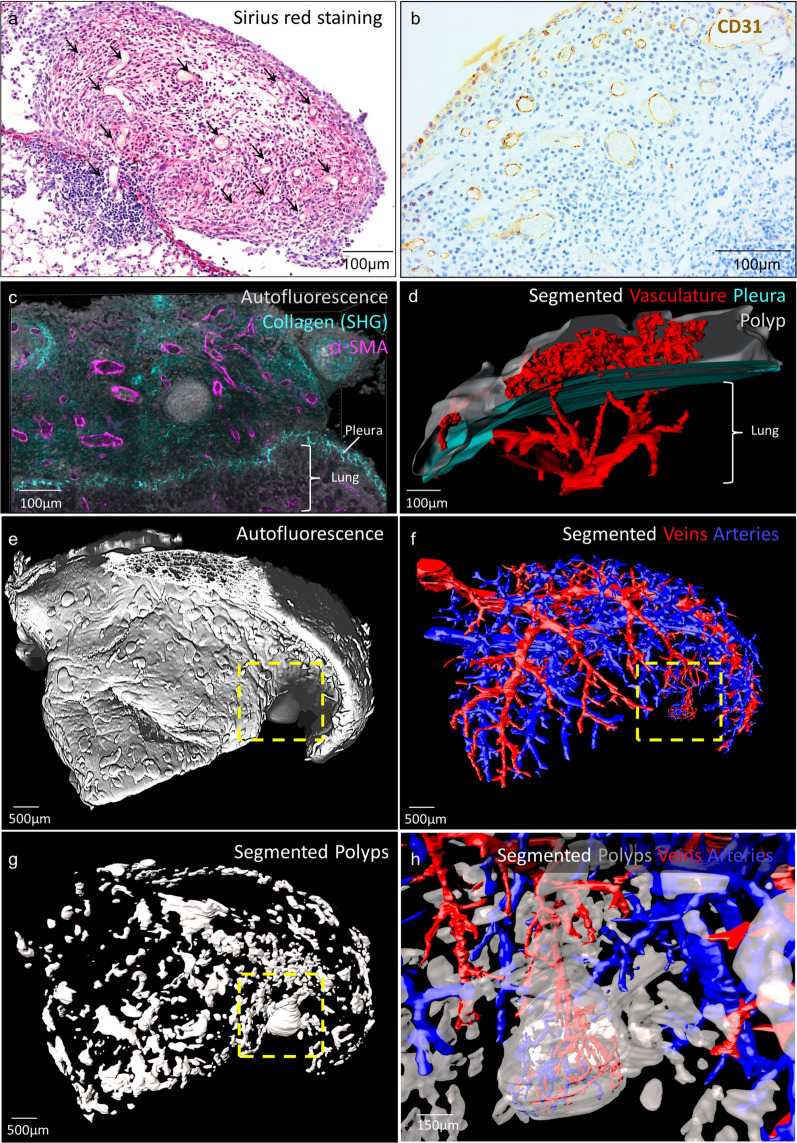Fig. 4.
Large polyps are vascularized. Lungs from 70 days Mfpos gerbils were paraffin-embedded. a Picrosirius red staining of a large polyp. Arrowheads indicate sections of blood vessels. Results are representative of n = 19 Mfpos gerbils (b) CD31 staining of a large polyp (> 250 µm) showing a strong vascularization. c–h Lung tissue from 3 Mfpos mice was processed for 3D imaging (see Additional file 4: Figure S4). c, d 500-µm-thick lung sections were imaged by 2-photon microscopy. c Blend mode vue (opaque colours) of a 131-µm z-stack showing αSMA expression (purple) by polyp’s blood vessels. Collagen is revealed by the Second Harmonic Generation (SHG) imaging (cyan) and tissue architecture by autofluorescence (white). d Segmentation of vasculature (red), polyp (gray) and pleura (cyan) in a 425-µm z-stack (step = 5 µm) showing pulmonary origin of polyp vasculature. e–h The post-caval lobe was imaged with a light sheet microscope and structures were segmented. e Blend mode vue (opaque colours) of tissue autofluorescence in a 3325-µm z-stack (step = 5 µm). f Segmentation of venous (red) and arterial (blue) trees. g Segmentation of polyps (gray). h Magnification of the framed area

